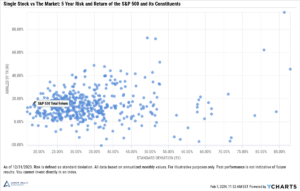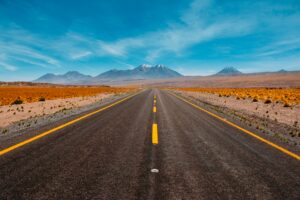Is exercising stock options right before a company goes public a good idea? Employees with pre-IPO incentive or non-qualified stock options often wonder if they should exercise before the company goes public (perhaps during a final open window) or wait until after the IPO. Assuming you have the cash on hand to fund it (more on that later), it can be a difficult question to answer as we’ll only know in hindsight (after seeing how the stock performs) whether exercising before the IPO was a good idea or not. So the choice ultimately has to be an educated guess in consideration with other key factors about your equity, post-IPO plans, and financial situation.
Pros and cons of exercising stock options in a pre-IPO window
If you are new to the tax implications and basics about exercising stock options, please read this article first.
The upside of a well-timed exercise is clear: potential for significant tax savings and reducing the time you need to hold the stock to qualify for long-term capital gains tax rates. Unfortunately, for those tax savings to materialize, the post-IPO stock price at sale must be considerably more than the pre-IPO valuation at exercise. Most companies go public at their highest historical valuation. This isn’t always the case though – Instacart is likely to be a notable recent example of that, further highlighting the risk of exercising without liquidity.
Before discussing when it may make sense to consider exercising right before an IPO, we should first talk about when it likely does not make sense to consider it. So let’s get that out of the way first.
When a pre-IPO exercise won’t work
At Darrow Wealth Management, we specialize in planning for a sudden liquidity event, typically from stock options following an IPO or acquisition. So we speak with a lot of people who fit this profile and get asked the pre-IPO exercise question often.
The most clear-cut example of when it doesn’t make sense to exercise in advance is when it’s prohibitive from a cash flow perspective. This can happen to early employees and recent hires alike. Here’s an example.
Early employee:
- Options vested: 100,000
- Strike price: 10 cents
- Last 409a: $20
- Cost to exercise and buy the shares: $10,000
- Spread (for the alternative minimum tax if you have ISOs or taxable spread as regular income with required withholding if NQSOs ignoring payroll tax): $1.99M
While likely the employee could come up with $10k to exercise the shares, the spread from the exercise is massive and is sure to result in a huge tax bill.
Many early employees have incentive stock options (ISOs) so the main concern is the AMT bill. Even if the IPO was early in the year, leaving you plenty of time to get past the 180-day lockup and still meet a 1-year post-exercise holding period to sell shares in the open market to pay the tax next April, it’s still a major risk.
You might be forced to sell potentially a lot of stock at depressed market prices, not to mention other issues that can arise for insiders or if daily trading volumes make it difficult to exit. (In the reverse, when the IPO is late in the year, you might still be in a lockup come April, a potential problem for those with ISOs).
Regular employee or more recent hire:
- Options vested: 25,000
- Strike price: $13
- Last 409a: $20
- Cost to exercise and buy the shares: $325,000
- Spread (for the alternative minimum tax if you have ISOs or taxable spread as regular income with required withholding if NQSOs ignoring payroll tax): $175,000
This is the reverse of the prior situation. Now, the main hurdle is coming up with $325,000 to buy the stock. Although the spread is still considerable, at the 22% statutory withholding rate for non-qualified stock options (if under $1M), the tax due with simple hypothetical math is ‘only’ about $38,500. In 2024, the AMT exemption for married couples is $133,300, so if this individual had ISOs instead, depending on the rest of their tax situation, the actual AMT tax due could be relatively small.
A concentrated stock holding already carries a lot of risk, so we seldom recommend individuals consider taking on debt to fund the exercise of stock options.
6 Tax Strategies for Incentive Stock Options and AMT
When to consider taking advantage of a pre-IPO exercise window
If you have other outside assets and cash available to fund the exercise of the options and projected (or actual) tax due, then it may make sense to weigh the pre-IPO exercise of all, or a portion of, your options. Here are some factors to consider in your decision:
- Relative amount of cash needed to exercise now compared to your liquid resources
- How long it might take you to replenish your savings out of other income, during the lockup, or in light of your post-lockup diversification strategy
- Your objective assessment of the current 409a valuation relative to other potential outcomes for the stock (like up 50% or down 50%) and conviction in the company’s outlook
- Potential tax planning opportunities by spreading exercises of vested shares over 2 calendar years
- Planned relocations in the event state tax planning opportunities may exist (and they might not) and added taxes like the Massachusetts Millionaire’s Tax
- Your plans to leave the company after the IPO
- Your overall risk profile
- Expected major changes in your tax situation this year versus the next year or 2
Don’t lose sight of the big picture
It’s easy to get sidetracked at the thought of making moves to save big on taxes. Stocks don’t only go up, so it’s important to consider the timing of the exercise in the context of your larger financial picture. Here are some things to consider when managing your stock options in anticipation of an IPO.
- The stock may not perform as you expect. Professor Jay Ritter from the University of Florida has done extensive research on IPOs. Average returns for newly public companies over the first six months generally outperformed similarly-sized firms by 1.2%, though performance during months 6-12 typically underperformed by -4.6%. And returns in the first and second years after going public lagged by -3.4% and -7.2%, respectively. So you need a plan if the stock price goes to Florida.
- What if the IPO doesn’t happen? Consider where your employer is in the IPO filing process because once-eminent IPOs have paused before (Instacart) and can create big liquidity issues
- Other ways to exercise. Once the company is public, you’ll have more ways to exercise, such as cashless (exercise and sell same-day) and net exercises (exercise using shares to cover the cost, hold the rest). This is a way for the shares to fund the exercise without dipping into your diversified assets/cash reserves. Also, sometimes it’s better to skip the long-term holding period and the risk that comes with it. Waiting until after the IPO can help accomplish this.
Right before an IPO, the timing of the exercise is likely to matter a lot less than your ultimate sale price
In this situation, we’re not talking about early exercising with a limited cash outlay and no taxable spread. So before getting too bogged down in the timing of your pre-IPO exercise, focus on how you’re considering taking and allocating profits after the IPO.
For individuals expecting a sudden wealth event, sometimes the potential for tax savings causes employees to lose sight of the bigger picture. In the simplest form, taxes are based on the difference between the price you paid for something and the price you sell it for. That difference might be taxed all at the same rate (regular income or capital gains) or some mix between the two and AMT depending on the situation.
Make no mistake – this gap can equal a lot of money. That said, tax planning moves done in advance can also easily be negated by a sales plan that’s too bullish. Consider this simple example: paying tax at a 35% rate on pre-tax proceeds of $4M still nets you more after-tax than $3M in pre-tax proceeds taxed at 20%.
While it’s not possible to control what happens to the stock price in the weeks and months after the IPO, employees with equity compensation can control when they diversify and take profits once they have liquidity.
Financial advisor for stock options and sudden wealth
Darrow Wealth Management specializes in stock options and equity compensation. If your employer is going public, work with an advisor experienced with strategic stock option planning, tax implications, and strategies to best manage sudden wealth.
Schedule a call with an advisor
Nationally Recognized Wealth Advisor in Stock Compensation
Selection of media appearances by Kristin McKenna CFP®, President of Darrow Wealth Management and a nationally recognized specialist in employee stock options and equity compensation.  Publications above reflect media organizations that have quoted and/or published articles authored by Kristin McKenna and should not be misconstrued as a current or past endorsement of Kristin McKenna, Darrow Wealth Management, or any of its advisors. Please refer to the media page for more information and links to published works.
Publications above reflect media organizations that have quoted and/or published articles authored by Kristin McKenna and should not be misconstrued as a current or past endorsement of Kristin McKenna, Darrow Wealth Management, or any of its advisors. Please refer to the media page for more information and links to published works.
Last reviewed February 2024











